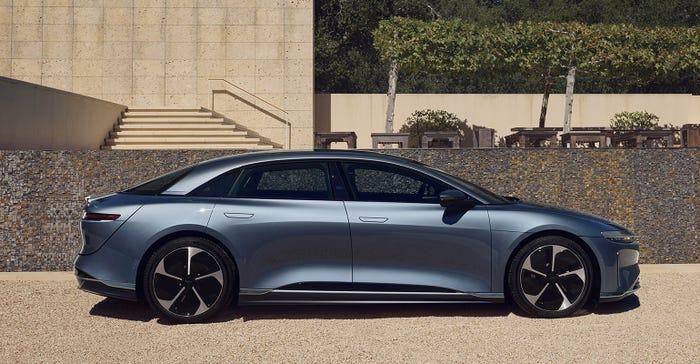EPA's 10 Most Efficient 2023 EVs & Hybrids
The US Environmental Protection Agency ranked 2023 cars by size class for fuel efficiency; these 10 EVs and hybrids top the list.
March 27, 2023

Today, the automotive market is saturated with a variety of different vehicle types, including electric vehicles (EVs), hybrids, plug-in hybrids, and standard internal-combustion-engine (ICE) based vehicles. With all of these varied offerings coming with different operations, it can become confusing to compare fuel efficiency vehicle-to-vehicle.
To do so, the US Environmental Protection Agency (EPA) uses “miles per gallon equivalent” (MPGe), as a means of examining the efficiency of EVs —a vehicle for which “miles per gallon” (MPG) doesn’t really apply.
Recently, the EPA released lists of the most efficient 2023 vehicles on the market. We looked at both lists—one which includes EV offerings and one without EVs—to put together a list of the most efficient EVs and hybrid vehicles by vehicle size class.
As we explained when we looked at the 2022 EPA lists, here’s how the EPA calculates MPGe: In the agency’s EV tests, a fully charged all-electric vehicle is driven on a dynamometer over successive simulated city and highway routes until the battery is depleted. Once a vehicle battery is fully discharged, it is recharged using the manufacturer-supplied charger for that vehicle.
The energy consumption is then calculated from the recharging energy, the energy-discharge data from the vehicle, and the distance traveled for each cycle. The recharge energy includes any charging losses due to inefficiencies in the manufacturer’s charger.
The EPA measures EV efficiency first in kilowatt-hours per hundred miles (kWh/100 miles). That gives a figure equivalent to what gallons per mile (not miles per gallon) would be with a gasoline-powered car. Then, trying to keep close to the terminology consumers are familiar with, the EPA uses that data to calculate MPGe.
“Think of this as being similar to MPG, but instead of presenting miles per gallon of the vehicle’s fuel type, it represents the number of miles the vehicle can go using a quantity of fuel with the same energy content as a gallon of gasoline,” explains the EPA’s fueleconomy.gov web site. “This allows a reasonable comparison between vehicles using different fuels.”
Read on to learn about the EPA’s 10 most efficient 2023 EVs and Hybrids by size class.
About the Author(s)
You May Also Like





